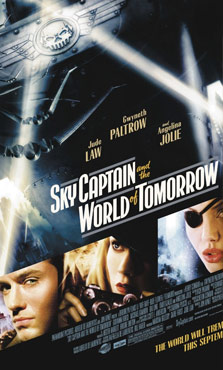 On the “Star Wars” DVD documentary “Empire of Dreams”, the cast retells the familiar story about George Lucas’s one and only direction: “Faster. More intensity.” Take after take, day after day: “Faster. More intensity.” The joke was well known to insiders (Sofia Coppola affectionately lampooned her father’s nerdy colleague in the form of the Japanese photographer in “Lost In Translation”) and was often cited as evidence that the technology-obsessed Lucas had, when it came to working with humans, the delicate touch of a pianist wearing catcher’s mitts. On the “Star Wars” DVD documentary “Empire of Dreams”, the cast retells the familiar story about George Lucas’s one and only direction: “Faster. More intensity.” Take after take, day after day: “Faster. More intensity.” The joke was well known to insiders (Sofia Coppola affectionately lampooned her father’s nerdy colleague in the form of the Japanese photographer in “Lost In Translation”) and was often cited as evidence that the technology-obsessed Lucas had, when it came to working with humans, the delicate touch of a pianist wearing catcher’s mitts.
“Sky Captain and The World of Tomorrow” negatively illustrates the wisdom of Lucas’s much-maligned direction (as do Lucas’s “Star Wars” prequels). I found myself repeating Lucas’s mantra to myself after each exchange of dialogue in which the actors dawdled a beat behind the kinetic visuals. Gwyneth Paltrow and Jude Law, who do have a likable chemistry between them, nevertheless seem as if they’re acting in a different movie altogether than the one Kerry Conran’s F/X wizards concocted. The film is entirely blue screen, minus a prop here and there, and Paltrow and Law are clearly adrift in most of the scenes. She runs through a terrifying column of 200-foot tall robots as if wading into traffic to hail a taxi; he flies his plane with the businesslike expression of a boy playing Nintendo. ‘Captain’ has been called an update of “Raiders of the Lost Ark”, but the comparison is valid only if one imagines Indy and Marion on Prozac.
Their slow performances are redeemed by one fact: Paltrow and Law are extraordinarily beautiful people. Paltrow as Polly Perkins has never looked more lovely, her smile a lush crimson, skin flawlessly creamy, hair a blaze of soft platinum. Law’s Sky Captain, Joe, with his dashing good looks and throwaway seductiveness, calls to mind no one so much as Cary Grant. Even in the heart of a steamy jungle these two look ready to hop in a cab and head uptown for a swank cocktail party. Indeed, part of what makes them enjoyable to watch runs counter to the script. As in “The Talented Mr. Ripley”, Law and Paltrow seem to belong to the champagne set: sweaters around the neck, golden hair fluttering in soft breezes, sailboats off Nantucket. Watching them carry on like proles in ‘Captain’ (she a dogged journalist, he a hardscrabble pilot) is unintentionally funny because they keep giving themselves away. Paltrow outshines even the most amazing of Conran’s effects, and even in the gravest danger Law occasionally slips into a bedroom whisper.
But that’s what makes them stars. And in the end, they’re just another special effect on Conran’s pallette, and one of the best. In that sense their acting doesn’t matter. They are no more alive than the footage of Sir Laurence Olivier, who cameos as the evil Dr. Totenkopf. They are markers, display pieces, like every other visual effect in this totemic movie. Conran has put a graphic novel onscreen, a work of great visual power that’s viewed best as a series of static images. The cinematography—vivid black and white burnished with effulgent colors—adds a soothing gossamer texture to the scenes that puts ‘Sky Captain’ into the realm of dewy-eyed nostalgia, almost begging to be viewed as nothing more than a museum piece. Sometimes the film bursts through with its own power, as in the dogfight in the steel canyons of Manhattan, or the underwater battle beneath Totenkopf’s island. Elsewhere, such as the Shangri-La sequence and the early scenes with Perkins and her editor and Joe in his headquarters, the film just lays there, helpless and inanimate.
None of this makes ‘Captain’ a bad film, merely one that’s ever so slightly out of sync. I’ve seen the film twice and I’m no closer to passing a final verdict. Very little in the film seems memorable, yet there’s a masterpiece hiding in plain sight. The screenplay ranges from the merely adequate to the truly funny (“I meant throw something”, says Dex, after Joe and Polly use themselves to test a trap; the triple bed; Polly’s last, ill-fated photo). The robots, quack science, Expressionist pulp, ray guns, bulbous rockets, gee-whiz Flash Rogers accoutrements, even the wrinkled sofa cushions masquerading as Angelina Jolie’s lips—all are handled expertly, with an encyclopedic grasp of details and sophisticated artistry. Paltrow and Law are perfect for this tasteful, coffee-table book of a film that turns its nose up at the usual CGI vulgarity (there isn’t a single bullet-POV shot, for example). Still, there’s no question it’s too leisurely for its own good. When he raided the master’s vaults, Conran should have grabbed one more little trick from Lucas: Faster. More intensity. Repeat. |